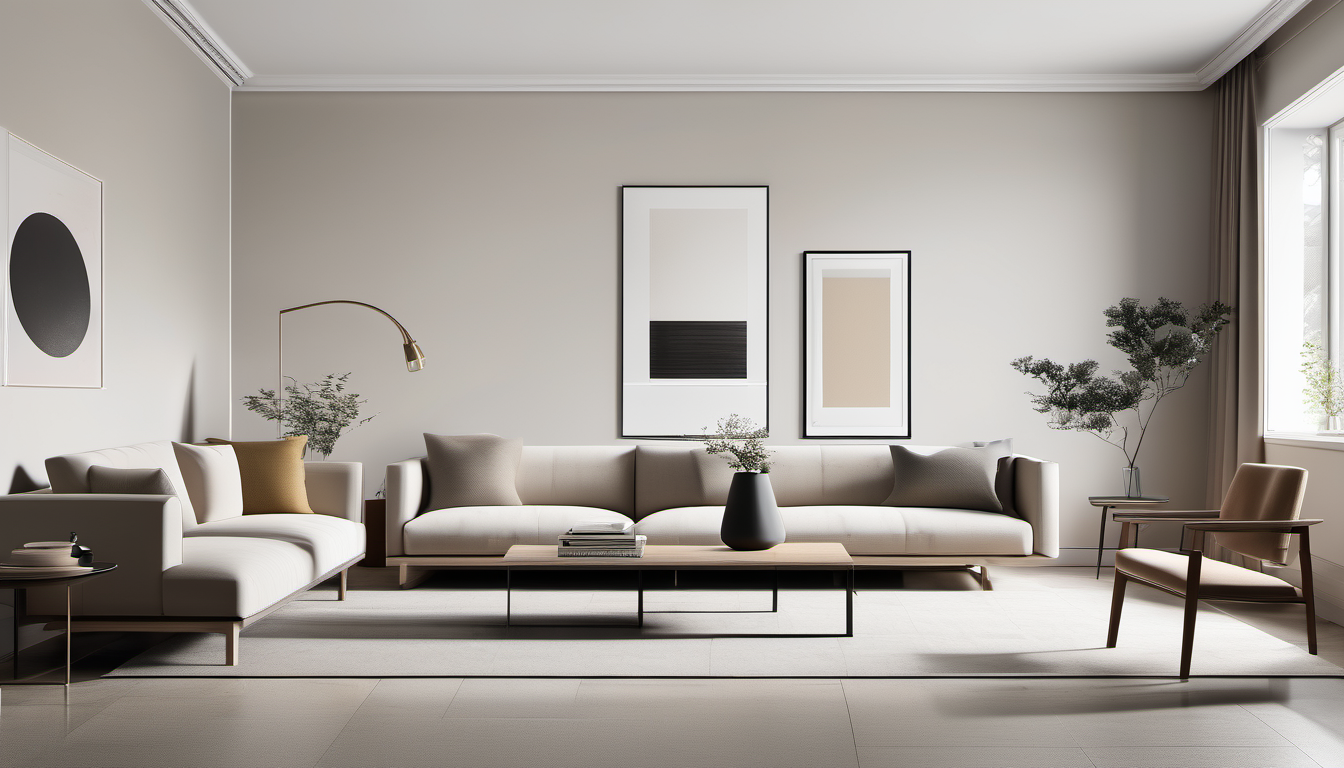Welcome to the world of minimalist home decor! If you’re looking to create a calm and clutter-free living space that exudes simplicity and elegance, then you’re in the right place. Minimalist design is all about decluttering, embracing clean lines, and focusing on quality over quantity. It’s a timeless aesthetic that can transform any house into a haven of peace and tranquility.
In this article, “Minimalist Home Decor Ideas: Simple and Elegant Designs”, we will explore the principles of minimalism, the benefits of minimalist home decor, and provide you with practical tips on how to achieve a minimalist look in every room. From choosing the right color palette to incorporating minimalist materials and creating a calming atmosphere, we’ve got you covered.
So, let’s dive in and discover how you can transform your home into a minimalist paradise that both you and your guests will love. Get ready to simplify your surroundings and elevate your living space to a whole new level of sophistication.
Understanding Minimalism : Simple and Elegant Designs
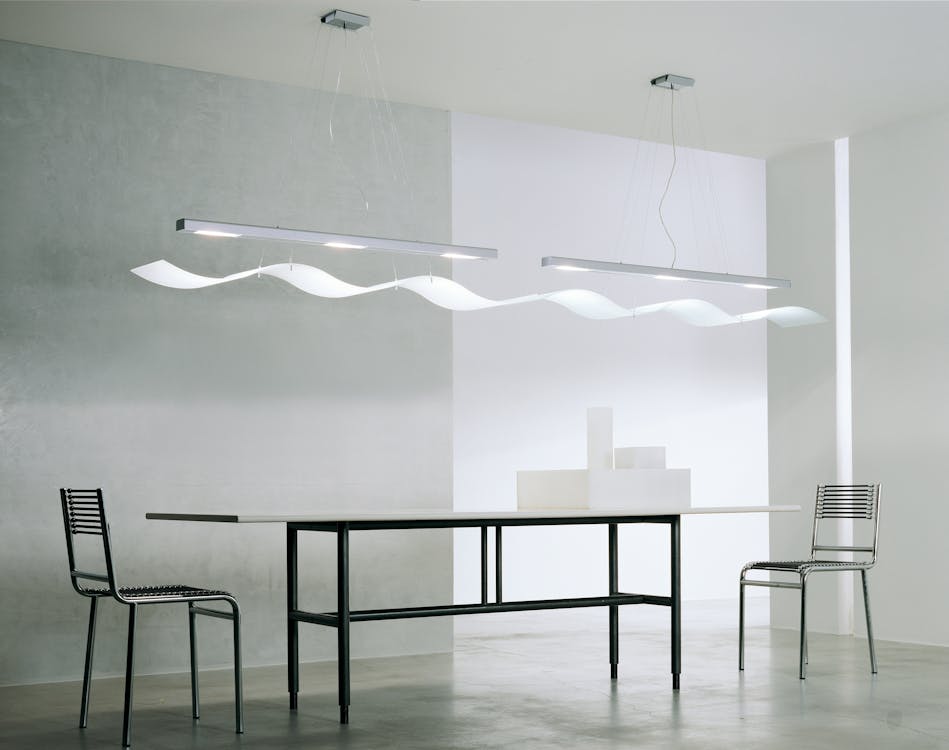
Minimalism is a design concept that focuses on simplicity and functionality. It involves reducing clutter and unnecessary elements to create clean and streamlined spaces. Minimalist home decor embraces the idea of “less is more” and promotes a sense of calm and tranquility. If you’re considering adopting a minimalist style in your home, here’s what you need to know:
Principles of Minimalism
- Simplicity: Minimalist design is all about simplicity. It involves removing excess ornamentation and embracing clean lines and sleek forms.
- Functionality: Every item in a minimalist space should serve a purpose. Furniture and decor elements should be practical and multi-functional.
- Open Space: Minimalism emphasizes open and spacious areas. It involves decluttering and organizing to create a sense of openness and breathing room.
- Quality over Quantity: Minimalist design focuses on quality over quantity. Instead of filling your home with numerous objects, choose a few high-quality pieces that have significance and purpose.
Benefits of Minimalist Home Decor
Adopting a minimalist style in your home can have several benefits, including:
- Reduced Stress: Cluttered and chaotic spaces can lead to feelings of stress and anxiety. By simplifying your surroundings, you can create a calm and peaceful environment.
- Ease of Cleaning and Maintenance: Minimalist spaces are easier to clean and maintain since there are fewer objects to dust and organize.
- Improved Focus and Productivity: A clutter-free environment allows you to focus better and increases productivity.
- Enhanced Visual Appeal: Minimalist design has a timeless and elegant aesthetic that can create a visually appealing and cohesive look in your home.
By understanding the principles of minimalism and the benefits it offers, you can begin creating a minimalist home decor that suits your style and preferences. In the next sections, we’ll explore different aspects of minimalist design, such as choosing a color palette, decluttering and organizing, furniture and decor elements, and more.
Choosing a Minimalist Color Palette

When it comes to minimalist home decor, choosing the right color palette is crucial in creating a clean and serene environment. Minimalist design is all about simplicity and using a minimal amount of color to achieve a harmonious and balanced space. Here are some key points to consider when selecting a minimalist color palette:
Neutral Colors
- Neutral colors such as white, beige, and gray are commonly used in minimalist design. These colors provide a calm and clean backdrop that allows other elements in the room to shine.
- White is the most popular choice for minimalist interiors, as it creates a sense of purity and spaciousness. It reflects light and makes a room appear larger.
- Beige and gray are also excellent choices for a minimalist color palette. They add warmth and depth to a space without overwhelming it.
Monochromatic Schemes
- Monochromatic color schemes are another popular option in minimalist design. They involve using different shades and tones of a single color throughout the room.
- Monochromatic schemes create a cohesive and harmonious look in the space. They are soothing to the eye and promote a sense of unity.
- For example, you could choose varying shades of blue for a calming and tranquil atmosphere, or shades of green for a fresh and natural feel.
Natural Tones
- Incorporating natural tones into your minimalist color palette can add warmth and a sense of tranquility to your space.
- Earthy colors such as soft browns, greens, and blues emulate the colors found in nature, creating a soothing and organic ambiance.
- These natural tones can be applied to furniture, textiles, or accent pieces, bringing a touch of the outdoors inside your home.
Remember, a minimalist color palette doesn’t mean you have to stick to a black and white aesthetic. Experimenting with different shades and textures within your chosen color palette can add depth and interest to your space. The key is to keep it simple, restrained, and cohesive.
“In a world driven by distractions, a minimalist color palette can create a peaceful oasis for the mind to unwind.”
Decluttering and Organizing

One of the fundamental principles of minimalist home decor is decluttering and organizing. By removing unnecessary items and creating a sense of order, you can create a calm and peaceful environment in your home. Here are some tips for decluttering and organizing your space:
Getting Rid of Unnecessary Items
- Start by going through each room and identifying items that you no longer need or use. Be ruthless in your decluttering and only keep items that are essential or bring you joy.
- Donate or sell items that are in good condition but no longer serve a purpose for you. This not only helps declutter your space but also allows others to benefit from the items.
- Consider implementing the “one in, one out” rule. Every time you bring something new into your home, make an effort to get rid of something else to maintain a clutter-free space.
Maximizing Storage Space
- Invest in storage solutions that help keep your belongings organized and out of sight. This could include shelves, baskets, bins, and storage ottomans.
- Utilize vertical space by installing wall-mounted shelves or hanging organizers.
- Take advantage of underutilized areas such as the space under your bed or stairs. Use storage containers to keep items neatly stored away.
Utilizing Minimalist Storage Solutions
- Choose furniture pieces that offer storage options, such as coffee tables with hidden compartments or bookshelves with built-in drawers.
- Use multi-purpose furniture to maximize space. For example, a sofa bed can serve as both a seating area and a guest bed.
- Consider open shelving for displaying items you truly love, but be mindful of not overcrowding the shelves. The key is to create a visually pleasing display without overwhelming the space.
By decluttering and organizing your home, you’ll not only create a minimalist aesthetic but also enjoy a more organized and efficient living space. Remember, the goal is to have a space that is free from unnecessary distractions, allowing you to focus on what truly matters.
Also Read: Budget-Friendly Minimalist Furniture in 2023: Affordable Options for First-time Homeowners
Furniture and Decor Elements
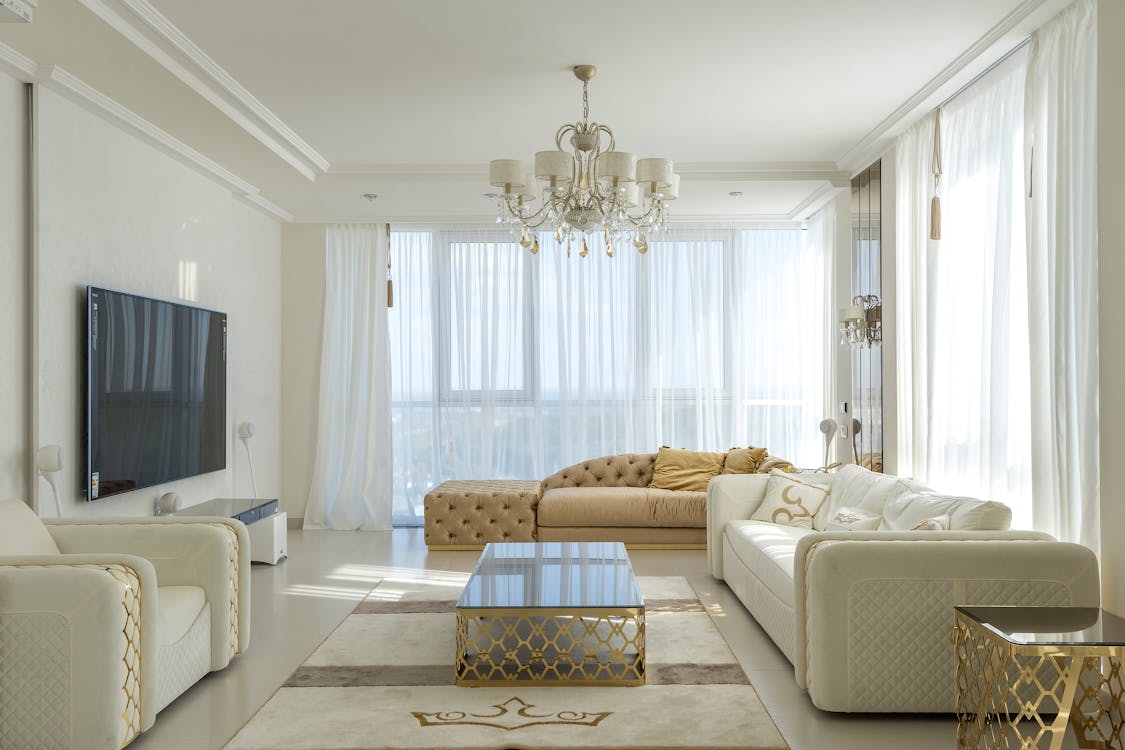
When it comes to creating a minimalist home decor, choosing the right furniture and decor elements is key. The goal is to achieve a clean and uncluttered look while still maintaining functionality and style. Here are some tips on selecting furniture and decor that will enhance your minimalist space:
Sleek and Functional Furniture
- Opt for furniture pieces with clean lines and simple designs. Avoid ornate details or excessive embellishments.
- Choose furniture made from high-quality materials that are durable and long-lasting.
- Focus on functionality. Look for multi-purpose pieces that can serve more than one purpose, such as a coffee table with built-in storage or a sofa that can be converted into a bed.
- Keep the furniture to a minimum. Stick to the essentials and avoid overcrowding the space with unnecessary pieces.
Minimalist Lighting Fixtures
- Lighting plays a crucial role in creating a minimalist ambiance. Choose lighting fixtures that are sleek and understated.
- Consider pendant lights or recessed lighting for a clean and modern look.
- Opt for fixtures with neutral tones or metallic finishes to blend seamlessly with the overall aesthetic of the room.
- Use lighting strategically to highlight certain areas or objects in the room, while keeping the overall lighting soft and ambient.
Art and Decor with Clean Lines
- Select artwork and decor that reflect the minimalistic style. Look for pieces with clean lines, simple shapes, and muted colors.
- Avoid cluttering the walls with too many artworks. Instead, choose one or two statement pieces that can serve as focal points in the room.
- Incorporate minimalist sculptures or metal wall art for added texture and visual interest.
- Don’t be afraid of negative space. Sometimes, leaving a blank wall or empty shelf can have as much impact as a filled one.
Remember, less is more when it comes to minimalist decor. Focus on quality over quantity and choose pieces that contribute to the simplicity and elegance of the space.
“Simplicity is the ultimate sophistication.” – Leonardo da Vinci
Embracing Minimalist Materials
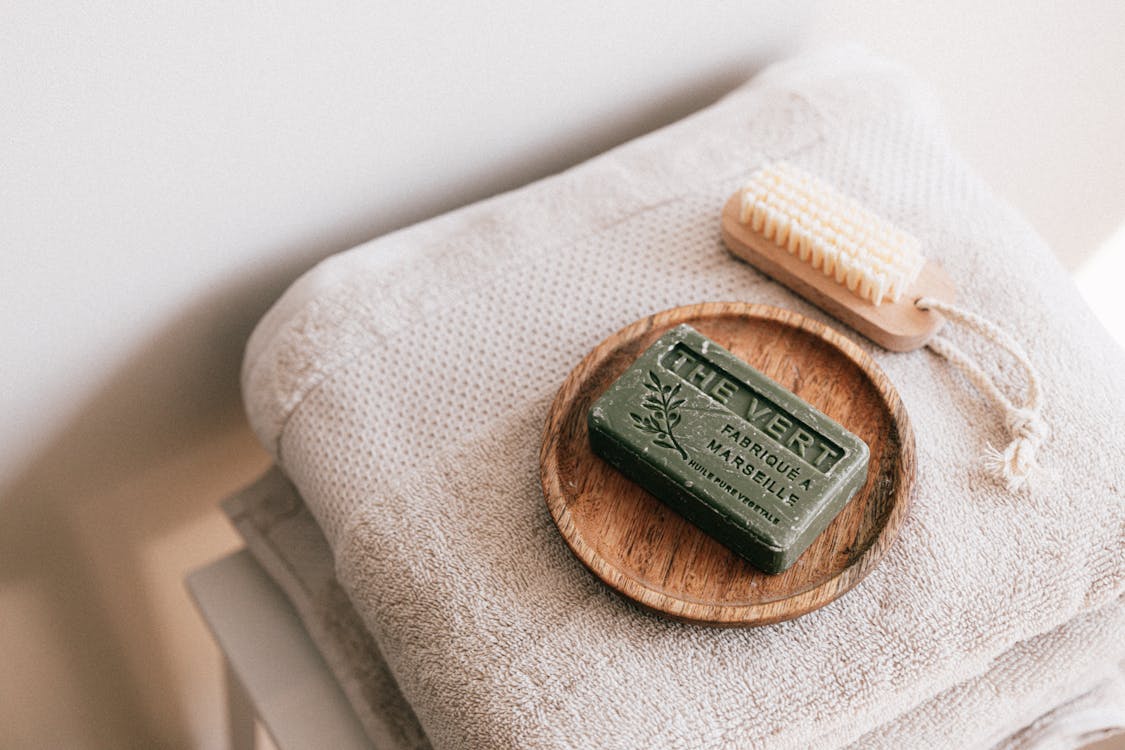
As you embark on your minimalist home decor journey, one important aspect to consider is the materials used in your design. Choosing the right materials can not only enhance the overall aesthetic of your space but also align with the principles of minimalism by promoting simplicity and sustainability. Here are some tips on embracing minimalist materials to create a sleek and clean look:
Use of Natural and Sustainable Materials
- Wood: Incorporating natural wood elements into your home decor can add warmth and texture to your space. Opt for light-colored woods such as oak or birch, which can complement the minimalist aesthetic. Whether it’s a wooden dining table, floating shelves, or a sleek bed frame, wood can bring a touch of nature indoors.
- Bamboo: Known for its sustainability and versatility, bamboo is an excellent material choice for minimalist decor. Consider bamboo flooring, curtains, or even furniture pieces such as chairs or side tables. Bamboo evokes a sense of tranquility and adds an organic feel to your home.
- Cork: Cork is an eco-friendly material that can be used in various ways in minimalist decor. It’s perfect for flooring, as it provides comfort, sound insulation, and is easy to maintain. You can also incorporate cork in the form of bulletin boards, coasters, or even as a wall covering.
Incorporating Metals and Glass
- Metal: Metals such as stainless steel, brass, or copper can add a sleek and modern touch to your minimalist space. Consider metal finishes for your fixtures, such as faucets or drawer handles, to create a contemporary look. You can also incorporate metal accents through artwork or decorative objects.
- Glass: Transparent and reflective, glass can create an illusion of openness and spaciousness in a minimalist home. Opt for glass tables, shelving, or even sliding doors to maximize natural light and create a sense of airiness. Glass also pairs well with other materials, such as wood or metal, creating a visually interesting contrast.
Textiles and Textures
- Simple Fabrics: When it comes to textiles, opt for simple and neutral fabrics such as linen or cotton. These natural materials not only add texture but also promote a sense of calm and relaxation. Use them for curtains, bedding, or throw pillows to bring softness to your space.
- Minimalist Patterns: If you want to add a touch of pattern to your minimalist decor, choose simple and subtle designs. Geometric patterns or minimalist motifs can add visual interest without overwhelming the overall simplicity of your space.
- Texture Play: Incorporate different textures to add depth to your minimalist decor. Mix smooth and rough surfaces, such as a plush rug paired with a sleek leather sofa, or a woven basket with a polished metal tray. The interplay of textures can create visual intrigue and a cozy atmosphere.
Remember, the key is to keep the materials and textures in your minimalist decor simple and purposeful. Each material choice should contribute to the overall aesthetic and functionality of your space. By embracing minimalist materials, you can create a harmonious and visually pleasing home that aligns with your minimalist lifestyle.
Creating a Calming Atmosphere

When it comes to creating a calming atmosphere in your home, minimalism can be a powerful tool. By paring down your belongings and simplifying your surroundings, you can cultivate a sense of peace and tranquility. Here are some tips and ideas for incorporating minimalist elements into your home decor to create a soothing and serene atmosphere:
Integrating Plants and Greenery
One of the key principles of minimalism is bringing nature indoors. Adding plants and greenery to your space not only enhances the aesthetic but also promotes a sense of calm and well-being. Here are some ideas for incorporating plants into your minimalist decor:
- Choose low-maintenance plants such as succulents or peace lilies.
- Use planters made of natural materials such as clay or woven baskets.
- Arrange plants in minimalist groupings or use them as focal points in your space.
- Incorporate vertical gardens or hanging planters for a unique touch.
Harnessing Natural Light
Another way to create a calming atmosphere is by maximizing natural light in your space. Natural light has a positive impact on our mood and helps to create an open and airy feeling. Here’s how you can make the most of natural light:
- Avoid heavy curtains or blinds and opt for sheer or light-colored window treatments.
- Position furniture to allow light to flow freely throughout the room.
- Use mirrors strategically to reflect natural light and make the space appear larger.
- Keep windows clean and unobstructed to allow as much light as possible.
Implementing Serene Scents
Aromatherapy can play a significant role in creating a calming atmosphere in your home. By incorporating soothing scents, you can instantly transform your space into a sanctuary. Consider these ideas for incorporating scents in your minimalist decor:
- Use essential oil diffusers or scented candles to infuse your space with calming aromas like lavender or eucalyptus.
- Consider natural air fresheners such as dried herbs or potpourri made from dried flowers.
- Opt for unscented or lightly scented cleaning products to maintain a fresh and minimalist scent throughout your home.
By focusing on these elements, you can create a calming atmosphere in your home that promotes relaxation and well-being. Remember, minimalism is all about simplicity, so embrace clean lines, open spaces, and natural elements to enhance the tranquility of your space.
Adding Minimalist Touches to Each Room
When it comes to creating a minimalist home, it’s important to extend the concept of simplicity and elegance to every room in your house. From the living room to the bathroom, every space can benefit from a minimalist touch. In this section, we will explore how you can add minimalist elements to each room of your home.
Living Room
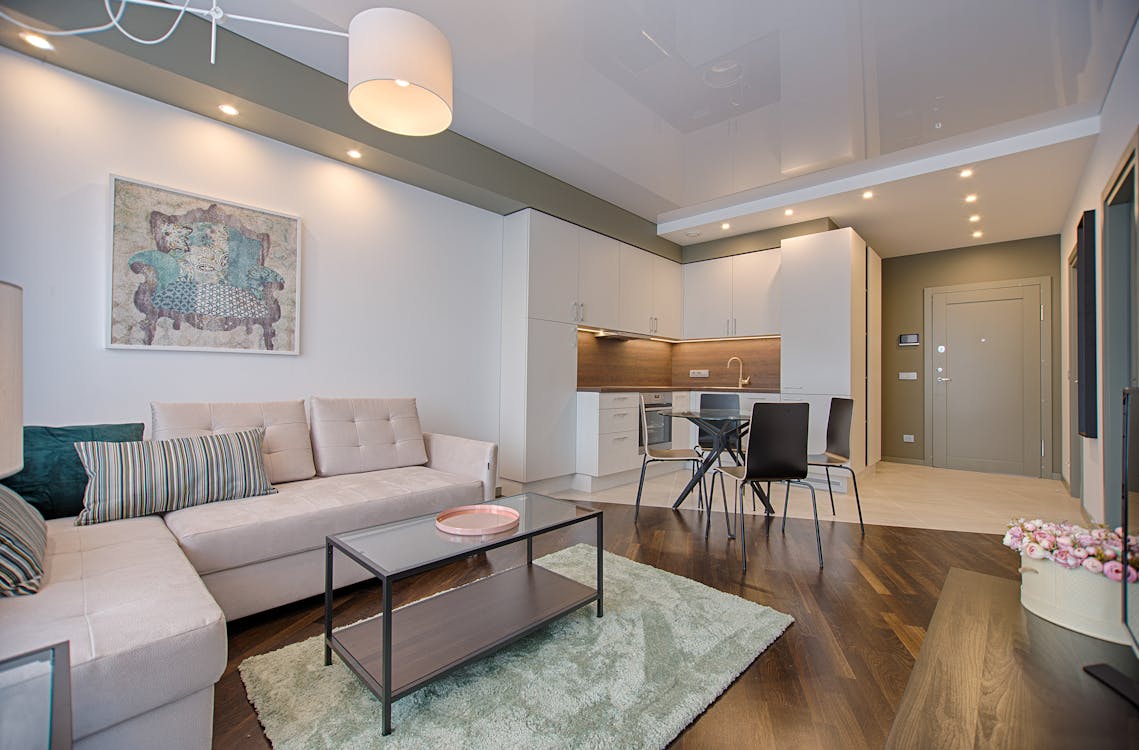
The living room is often the heart of the home, where we spend most of our time relaxing and entertaining. To create a minimalist living room:
- Keep the furniture simple and functional. Opt for sleek sofas and chairs with clean lines.
- Choose a neutral color palette for the walls and furniture. Whites, grays, and earth tones work well to create a serene atmosphere.
- Limit the number of accessories and decorations. Instead, focus on a few statement pieces that add visual interest without cluttering the space.
- Incorporate natural elements like plants or a minimalist indoor garden to bring life and freshness to the room.
Kitchen and Dining Area

The kitchen and dining area are where we gather to prepare meals and share them with loved ones. Here are some minimalist ideas for these spaces:
- Opt for a streamlined kitchen design with minimalistic cabinetry and appliances. Keep the countertops free of clutter by storing utensils and gadgets in drawers or cabinets.
- Choose simple and timeless dinnerware and cutlery. White or neutral plates and utensils create an elegant and cohesive look.
- Keep the dining table clear of unnecessary items. A simple centerpiece or a couple of candles can add a touch of sophistication without overwhelming the space.
Bedroom
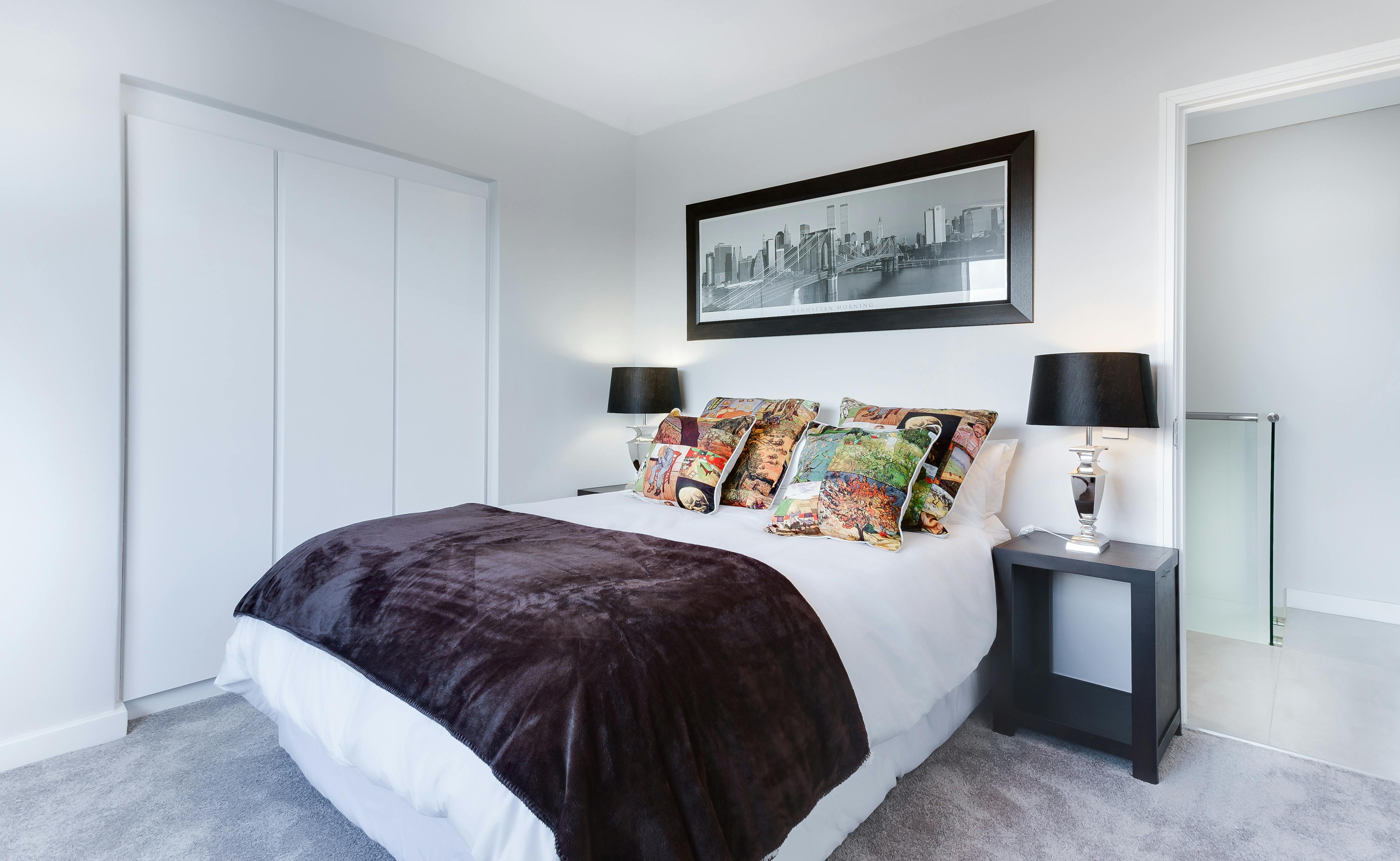
The bedroom should be a sanctuary of calm and relaxation. Here are some minimalist ideas for creating a serene bedroom:
- Choose a minimalist bed frame with clean lines. Avoid oversized headboards or unnecessary embellishments.
- Use a limited color palette for your bedding and curtains. Stick to neutral colors or soft pastels to create a soothing atmosphere.
- Keep the nightstands clutter-free. Opt for bedside lamps that have minimalist designs and provide soft ambient lighting.
- Create a designated space for relaxation, such as a cozy reading nook with a comfortable chair and a small bookshelf for your favorite reads.
Bathroom

The bathroom is a space where we should feel refreshed and rejuvenated. Here’s how you can add a minimalist touch to your bathroom:
- Choose simple and elegant fixtures such as a sleek sink, a minimalistic toilet, and a frameless shower enclosure.
- Keep the countertops clear of clutter by storing toiletries in drawers or cabinets.
- Use minimalistic accessories such as a clean-lined soap dispenser or a simple wall-mounted mirror.
- Add soft, neutral-colored towels and bath mats to create a spa-like atmosphere.
Remember, the key to adding minimalist touches to each room is to keep things simple and decluttered. Each room should have a clear purpose and only contain items that serve that purpose. By embracing simplicity and elegance, you can create a harmonious and calming environment throughout your entire home.
Minimalist Decor for Small Spaces
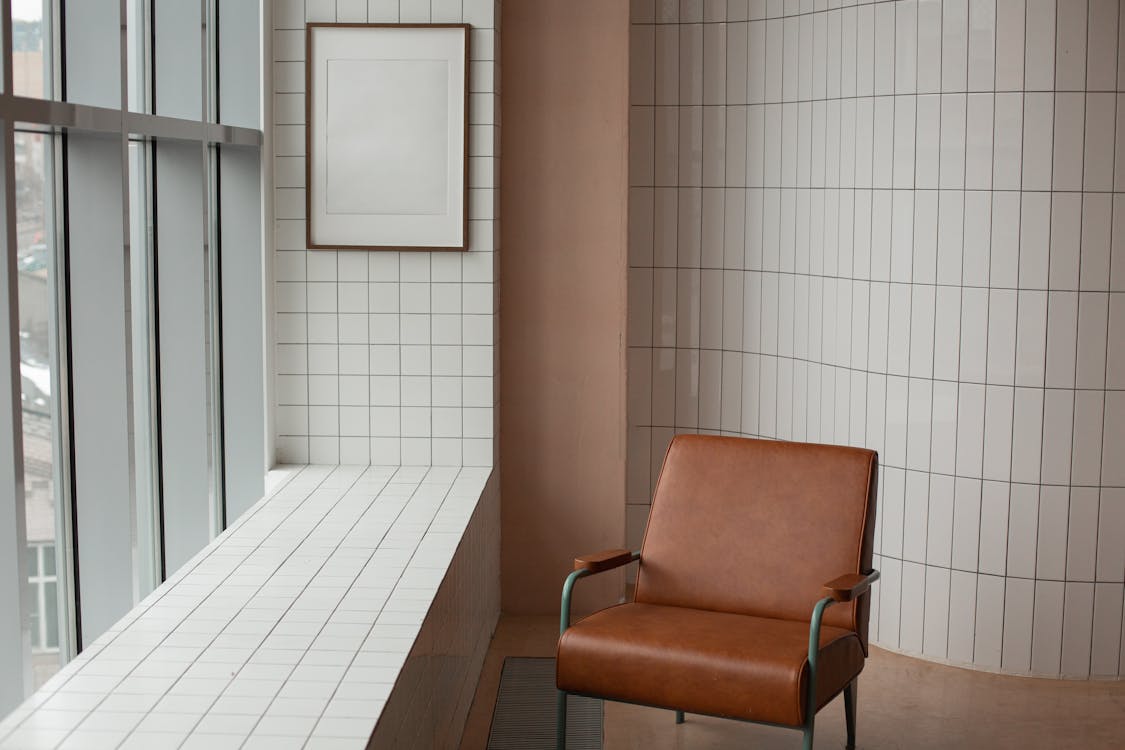
Small spaces can present unique challenges when it comes to home decor. It’s important to maximize every inch of space, while still maintaining a clean and clutter-free environment. Luckily, minimalism and small spaces go hand in hand, as minimalist decor focuses on simplicity and functionality. In this section, we will explore some tips and ideas for incorporating minimalist decor into small spaces.
Space-Saving Furniture
When it comes to small spaces, every square inch counts. Investing in space-saving furniture can make a huge difference in maximizing the available space. Here are some ideas:
- Multifunctional Furniture: Look for furniture pieces that serve multiple purposes. For example, a sofa bed can serve as seating during the day and a bed at night.
- Floating Shelves: Instead of bulky bookshelves, opt for floating shelves that can be mounted on the walls. This not only saves floor space but also creates a visually appealing display for books and decorative items.
- Nesting Tables: Nesting tables are a great option for small living rooms or bedrooms. They can be easily stacked together when not in use, freeing up valuable floor space.
- Wall-Mounted Desks: For a home office in a small space, consider a wall-mounted desk that can be folded when not in use. This allows you to have a functional workspace without taking up precious floor space.
Mirrors and Illusions
Mirrors are a fantastic tool when it comes to creating the illusion of space. They reflect light and give the impression of a larger and more open area. Here’s how you can use mirrors to enhance your small space:
- Strategic Placement: Place a large mirror across from a window to reflect natural light into the room. This will instantly make the space feel brighter and more spacious.
- Mirrored Furniture: Incorporate furniture with mirrored surfaces, such as a mirrored coffee table or a mirrored wardrobe. These pieces can visually expand the space and create a sense of depth.
- Mirror Wall: If you have a small hallway or entryway, consider installing a mirror wall. This will create the illusion of a larger space and make the area appear more open and inviting.
Maximizing Natural Light
Natural light is your best friend when it comes to making small spaces feel airy and open. Here’s how you can maximize the natural light in your small space:
- Sheer Curtains: Use sheer curtains instead of heavy, opaque ones. They allow more light to pass through while still providing privacy.
- Keep Windows Clear: Avoid blocking windows with furniture or decor items. Instead, arrange your furniture in a way that allows natural light to flow freely throughout the room.
- Light-Colored Walls: Opt for light-colored walls to help bounce light around the space. Lighter shades can make a room feel more open and spacious.
Tip: If privacy is a concern, consider frosted window film or blinds that allow light to pass through while still maintaining privacy.
In conclusion, incorporating minimalist decor into small spaces is all about maximizing functionality while maintaining a clean and clutter-free environment. By choosing space-saving furniture, utilizing mirrors and illusions, and maximizing natural light, you can create a small space that feels open, inviting, and stylish. Remember, less is more in minimalist decor, so be intentional with your choices and let the simplicity shine through.
Sustainable and Eco-Friendly Minimalist Decor
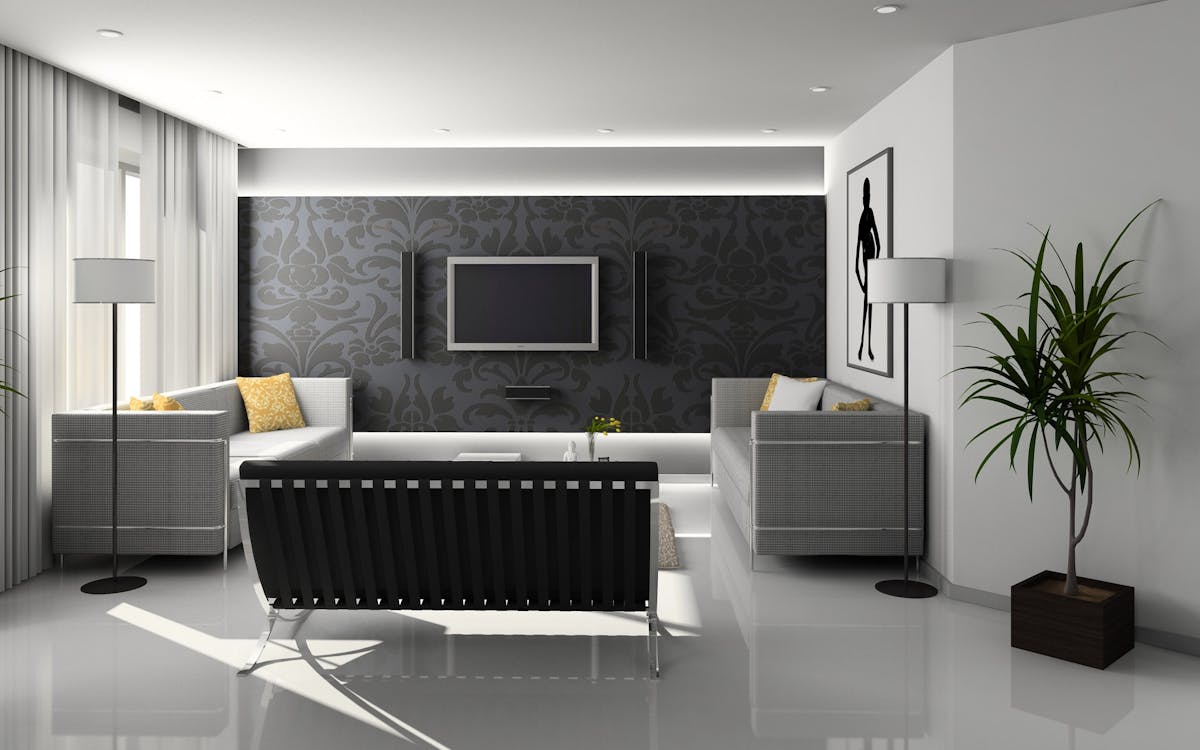
In today’s world, where environmental consciousness is on the rise, adopting sustainable and eco-friendly practices has become a priority for many. The concept of minimalism aligns perfectly with these values, as it promotes simplicity and reducing waste. If you are looking to embrace a minimalist lifestyle while also being mindful of the planet, here are some tips for incorporating sustainable and eco-friendly decor into your minimalist home:
Choosing Sustainable Materials
When it comes to selecting materials for your minimalist decor, opt for sustainable options that have a minimal impact on the environment. Here are a few choices to consider:
- Bamboo: Bamboo is a highly sustainable material that grows quickly and requires no pesticides or fertilizers. It is a versatile material that can be used for flooring, furniture, and even decorative accents.
- Cork: Cork is harvested from the bark of cork oak trees, which regrow their bark every few years. This process does not harm the trees, making it a sustainable and renewable resource. Cork can be used for flooring, wall coverings, and even as planters for your greenery.
- Reclaimed Wood: Using reclaimed wood helps reduce deforestation. Look for furniture and decor pieces made from reclaimed or salvaged wood, giving new life to old materials.
- Recycled Materials: Many companies now offer furniture and decor items made from recycled materials such as plastic, glass, and metal. These items help divert waste from landfills and promote a circular economy.
Energy-Efficient Lighting
Lighting plays a significant role in creating an atmosphere in any space. When choosing lighting fixtures for your minimalist home, consider energy-efficient options:
- LED Bulbs: LED bulbs use significantly less energy than traditional incandescent bulbs and can last up to 25 times longer. They are available in various color temperatures, allowing you to customize the lighting to suit your preferences.
- Natural Light: Make the most of natural daylight by keeping your windows unobstructed and using sheer curtains or blinds that allow light to filter through. This not only reduces energy consumption but also brings a sense of openness and connection to the outdoors.
Eco-Friendly Accessories
When it comes to accessorizing your minimalist decor, opt for environmentally friendly choices:
- Plant-Based Fabrics: Choose textiles made from natural fibers such as organic cotton, hemp, or linen. These materials are free from synthetic chemicals, pesticides, and herbicides commonly used in conventional textile production.
- Biodegradable and Natural Decor: Look for decor items such as baskets, pottery, and vases made from natural and biodegradable materials like clay, rattan, or jute. These items add texture and visual interest while being sustainable.
- Upcycled and Vintage Finds: Consider decorating your space with upcycled or vintage items. These one-of-a-kind pieces not only add character and charm to your decor but also reduce waste by giving new life to old objects.
By incorporating sustainable and eco-friendly elements into your minimalist decor, you can create a space that is both aesthetically pleasing and aligned with your values. Remember, minimalism is not just about decluttering; it is also about making conscious choices to reduce our impact on the planet. So, invest in quality pieces that will last, choose materials wisely, and embrace simplicity in your design. Your minimalist home can be a sanctuary for both you and the environment.
Also Read: Minimalist Dining Room Ideas : Simple and Functional Design in 2023
Conclusion
In conclusion, minimalist home decor is all about embracing simplicity, functionality, and tranquility in your living space. By following the principles of minimalism, choosing a neutral color palette, decluttering and organizing efficiently, selecting sleek furniture and clean-lined decor elements, and incorporating natural and sustainable materials, you can create a calming atmosphere that promotes a sense of peace and clarity.
Remember, minimalism is not just a trend, but a lifestyle choice that can have numerous benefits for your physical and mental well-being. By eliminating unnecessary items and focusing on what truly brings you joy, you can create a space that is both visually appealing and practical.
Whether you have a large home or a small apartment, minimalist decor can work wonders in maximizing your space and creating an illusion of openness. By utilizing space-saving furniture, incorporating mirrors and maximizing natural light, you can transform even the tiniest of rooms into a functional and inviting environment.
Embracing sustainable and eco-friendly options in your minimalist decor can also contribute to a healthier planet. Choose materials that are ethically sourced, opt for energy-efficient lighting solutions, and incorporate eco-friendly accessories into your space.
Minimalism is not about being deprived or lacking in style. It’s about creating a harmonious and clutter-free environment that allows you to focus on the things that matter most to you. So, embrace the simplicity, embrace the calmness, and create a minimalist haven that reflects your personal style.
To explore more minimalist decor ideas and get expert guidance on creating a calming and clutter-free living space, visit Minimalist Home Guru.
Remember, less is more, and simplicity is the key to a peaceful and stylish home!
Frequently Asked Questions
- What are some minimalist home decor ideas?
Some minimalist home decor ideas include: 1. Decluttering and keeping spaces clean and organized, 2. Using neutral color palettes and minimal patterns, 3. Opting for furniture with clean lines and simplicity, 4. Incorporating natural materials like wood and stone, and 5. Maximizing natural light and keeping window treatments simple.
- How can minimalist home decor create a sense of elegance?
Minimalist home decor creates a sense of elegance by focusing on simplicity, clean lines, and carefully curated pieces. By removing excess clutter and unnecessary distractions, a minimalist design allows key elements to stand out and creates a calming and sophisticated atmosphere.
- Can minimalist home decor be cozy and inviting?
Absolutely! Minimalist home decor can be cozy and inviting by incorporating soft textures, warm lighting, and comfortable seating. By carefully selecting a few well-designed and thoughtful pieces, you can create a minimalist space that feels warm and welcoming.
- How do I start implementing minimalist home decor in my space?
To start implementing minimalist home decor, begin by decluttering and removing any unnecessary items. Then, focus on creating clean and open spaces with a limited color palette. Gradually introduce minimalist furniture and decor that aligns with your personal style and desired aesthetic. - Can minimalist home decor work for small spaces as well?
Yes, minimalist home decor is particularly well-suited for small spaces as it emphasizes simplicity and functionality. By keeping furniture and decor to a minimum and utilizing clever storage solutions, you can make the most of your small space while maintaining a stylish and streamlined look.

